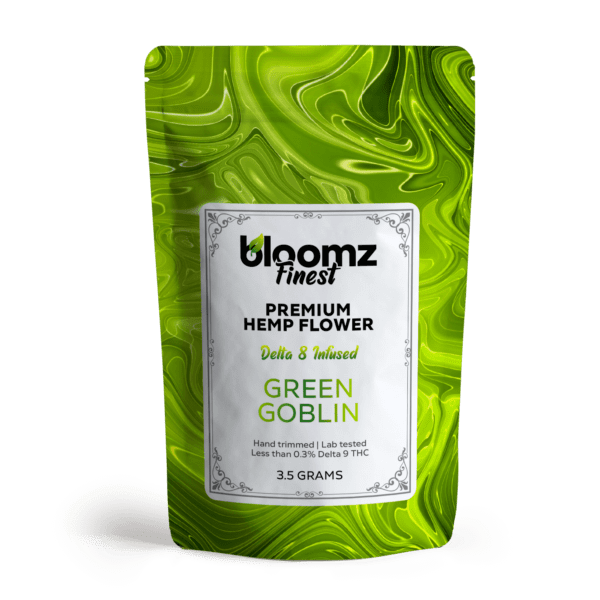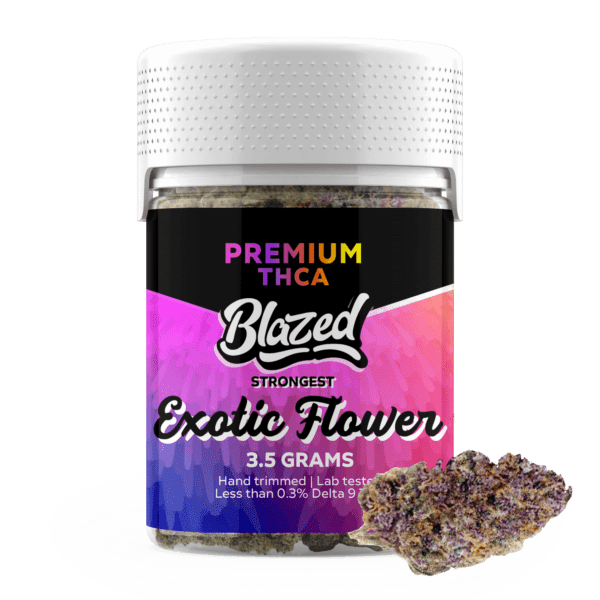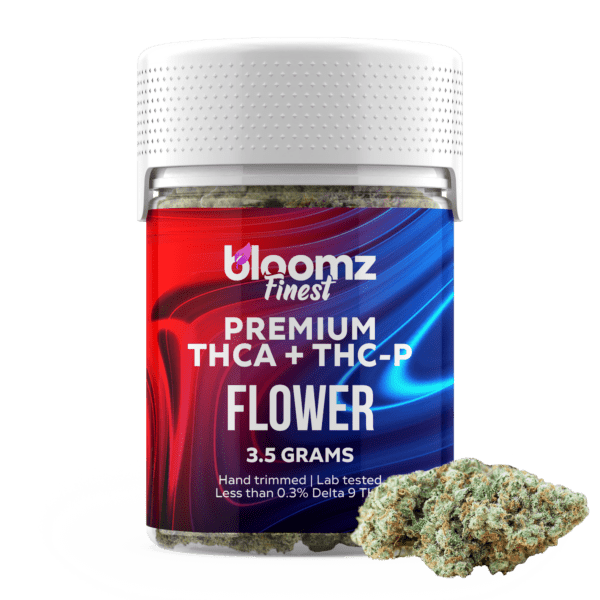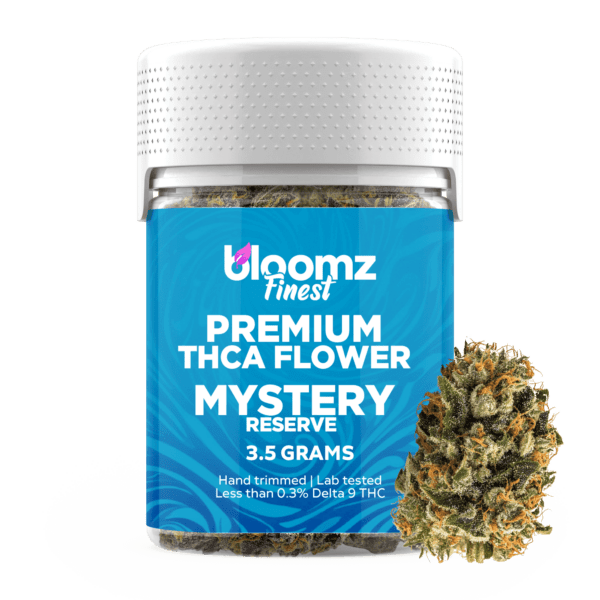In the grand and varied theater of natural and lab-enhanced substances, there are journeys for every temperament, from gentle, meandering paths to formidable, sheer-faced ascents. The modern explorer of consciousness stands before a fascinating choice, not just of destination, but of the very nature of the voyage itself. On one hand, we have HHC flower, a product of sophisticated chemical refinement, taking the familiar comfort of the cannabis plant and engineering it into a potent, stable, and remarkably smooth vessel for reaching euphoric heights. It represents a journey of controlled power and predictable bliss.
On the other, emerging from the dark, rich soil of ancient forests, is the Amanita Pantherina mushroom—the formidable Panther Cap. It is not a vessel of refined comfort but a raw, untamed force of nature, a key to a profoundly intense and unpredictable dissociative trance that has been respected and feared for centuries. This is a matchup of two different philosophies of intensity: the alchemist’s perfected elixir versus the shaman’s wild and powerful enigma.
To Buy HHC Flower Click Here
Recommended products
Why It’s Important to Breakdown the Matchup of HHC Flower vs. Amanita Pantherina Mushrooms
When navigating the world of potent, mind-altering substances, clarity is not just a luxury; it is a fundamental necessity. The comparison between HHC flower and Amanita Pantherina mushrooms is a critical and urgent discussion, as it involves two products that, while both appealing to an experienced user base seeking powerful effects, could not be more different in their nature and the journey they provide.
A detailed breakdown is an essential exercise in harm reduction and responsible education, designed to arm the discerning consumer with the knowledge needed to distinguish between two completely separate classes of experience. To approach one with the expectations of the other would be to court confusion at best, and a deeply uncomfortable ordeal at worst. This analysis draws a bright, clear line between two very different kinds of potent.
The most crucial reason for this in-depth analysis lies in the chasm between their pharmacological actions and resulting states of consciousness. HHC flower delivers a potent but relatively predictable psychoactive experience, a powerful high that operates within the familiar framework of the endocannabinoid system, closely mimicking the effects of classic Delta 9 THC. Amanita Pantherina, in stark contrast, is an extremely powerful dissociative.
Its active compounds act on the brain’s GABA system, inducing a deep, sedative, and often bizarre dream-like trance that is entirely alien to a cannabinoid high. Understanding this is not a matter of nuance; it is the difference between preparing for an intense but recognizable state of euphoria and preparing for a profound, unpredictable journey of detachment from reality that demands a completely different level of psychological readiness.
Furthermore, their respective safety profiles, while both demanding serious caution, originate from different sources of risk. HHC flower is a manufactured product, and its safety concerns are industrial in nature. They revolve around the purity of the chemical hydrogenation process, the potential for residual heavy metal catalysts, and the general lack of regulation in the market.
The risks associated with Amanita Pantherina are natural and toxicological. They center on its inherent and variable high potency, and the critical need for perfect preparation to convert the neurotoxic ibotenic acid into the desired muscimol. One risk profile requires trust in a laboratory’s processes; the other requires deep knowledge of a potent natural toxin.
Finally, this comparison is vital for aligning intention with outcome. HHC flower is generally sought by those looking for a powerful, reliable, and enjoyable euphoric experience, a quantitative step-up in a familiar direction. Amanita Pantherina is a tool for the advanced explorer seeking a qualitative leap into the unknown—a profound, solitary, and deeply introspective journey that has no recreational parallel. By clearly delineating the use cases, risk profiles, and experiential realities of these two powerful contenders, we provide an essential guide for the experienced user, ensuring that any choice made is done with the utmost respect, knowledge, and intention.
Contender #1: HHC Flower
In the ever-expanding galaxy of hemp-derived cannabinoids, HHC flower has secured its place as a bright and dependable star, celebrated by users for its remarkable stability and its strikingly familiar effects. It has become a cornerstone of the alternative cannabis market, offering a unique and compelling option for those who seek the classic sensations of a THC high in a format that is, in many places, more legally accessible.
From a distance, a jar of HHC flower is indistinguishable from top-shelf marijuana, showcasing vibrant green and purple hues, a frosty coating of what appears to be trichomes, and the pungent, inviting aromas of its parent strains. This resemblance is intentional, as HHC flower begins its life as premium hemp, but its final, psychoactive character is the result of a sophisticated, multi-step laboratory process. It is a product that beautifully marries the agricultural art of hemp cultivation with the precise science of chemical hydrogenation, creating a reliable and enjoyable journey for the modern cannabinoid enthusiast.
At the core of this popular product is the molecule Hexahydrocannabinol, or HHC. While it has recently exploded in popularity, HHC is not a new discovery, as it was first synthesized in the 1940s by the legendary American chemist Roger Adams, who was a pioneer in cannabis research. HHC is typically created through a process called hydrogenation, which fundamentally alters the chemical structure of a THC molecule. In simple terms, this process involves adding hydrogen atoms to a THC molecule (often Delta 9 THC derived from a cannabis extract) in the presence of a metal catalyst like palladium or nickel.
This chemical reaction breaks one of the THC molecule’s double bonds in its top ring structure, replacing it with hydrogen atoms. The result is a “hydrogenated” cannabinoid that is incredibly stable. This increased stability means HHC is much more resistant to degradation from heat, UV light, and oxygen, giving it a significantly longer shelf life than its THC cousins. It is this unique, durable structure that also gives HHC its distinct and reliable effects.
With this crucial scientific context, it becomes clear that “HHC flower” isn’t a strain of cannabis that a farmer can cultivate to be naturally rich in HHC but instead, it’s a manufactured, composite, and infused product. The process begins with high-quality, legally grown hemp flower, which is naturally rich in CBD (cannabidiol) and contains less than 0.3% Delta 9 THC. This beautiful, terpene-rich flower provides the physical structure, the aromatic compounds that create the flavor and smell, and a host of other minor cannabinoids.
This foundational hemp flower then serves as the base which is meticulously infused or coated with a pure HHC distillate, the potent, honey-like oil created through the hydrogenation process. This infusion process is what elevates the simple, non-intoxicating hemp flower into a potent, psychoactive product, delivering the unique and sought-after effects of HHC in a familiar, smokeable format. The quality and safety of the final product are therefore entirely dependent on two separate but equally important factors: the premium quality of the initial hemp flower and the verified purity of the HHC distillate with which it is infused.
Recommended products
The creation of a high-quality and effective HHC flower is a multi-stage process that requires a perfect marriage of expert agricultural practices and precise, high-level laboratory techniques. Each and every step in this complex chain of production is critically important to producing a final product that is safe, potent, consistent, and enjoyable for the end consumer:
-
Cultivation of Premium Hemp Flower: The journey begins on the farm, where expert cultivators grow high-grade CBD or CBG hemp. These plants are selected for their desirable characteristics—large, dense buds, a rich profile of aromatic terpenes, and a beautiful visual appearance. After being harvested at peak maturity, the flower is carefully dried and cured to optimize its flavor and preserve its natural compounds.
-
Synthesis of HHC Distillate: In a specialized laboratory, a cannabinoid-rich extract is sourced, often from legal hemp. This extract undergoes the hydrogenation process. It is placed in a pressurized container with a catalyst and exposed to hydrogen gas, which chemically saturates the cannabinoid molecules to create HHC. The resulting crude oil is then meticulously refined and distilled to create a pure, potent, and clean HHC distillate, which is the active ingredient.
-
Infusion of Flower: The clear, viscous HHC distillate is then carefully applied to the cured hemp flower. To ensure an even and consistent product, manufacturers may use several techniques. A common method is to lightly heat the distillate to make it less viscous and then spray it evenly over the buds while they are being tumbled. Other, more advanced methods involve a solventless “cryo-infusion” process that helps the distillate bind more thoroughly to the flower’s surface.
-
Crucial Third-Party Lab Testing: This final step is essential for consumer safety and transparency. A reputable manufacturer will send a sample of the finished, infused HHC flower to an independent laboratory for a full panel of tests. This analysis verifies the potency of HHC and other cannabinoids and, critically, screens for any residual heavy metals (like the catalysts used in hydrogenation) or solvents, ensuring the product is clean, safe, and accurately labeled.
The HHC flower market offers a robust selection of product types and categories, primarily differentiated by the quality of the base hemp flower and the specific application process used. This variety allows consumers to choose an option that best fits their personal preferences for flavor, potency, and convenience. From connoisseur-grade indoor buds to easy-to-use pre-rolls, the market has evolved to cater to a wide range of experienced users seeking the unique and reliable effects of this stable cannabinoid:
-
Indoor HHC Flower: This is the top-shelf category of HHC flower. The process begins with premium, indoor-grown CBD or CBG hemp, which is prized for its flawless appearance, dense structure, and extremely rich terpene content. When this high-quality flower is infused with HHC distillate, it creates a product that offers the best of both worlds: the potent, balanced high of HHC and the complex, delicious flavors and aromas of a connoisseur-grade cannabis strain.
-
Outdoor HHC Flower: This more budget-friendly option uses hemp flower that has been cultivated outdoors in natural sunlight. While outdoor buds may be less perfectly manicured and slightly less potent in terpenes than their indoor counterparts, they provide an excellent and effective base for the HHC infusion. This category offers a great value for consumers who are more focused on the effects of the HHC itself than on the aesthetic nuances of the flower.
-
HHC Small Buds: Often called “popcorn” buds, HHC smalls are smaller nuggets of the same high-quality indoor or outdoor flower. They are separated from the larger, premium colas during the trimming and sorting process and are sold at a lower price point due to their size. HHC smalls are a fantastic option for those looking to enjoy the full experience of HHC flower in a more economical fashion.
-
HHC Moonrocks: For those seeking a truly powerful and concentrated experience, HHC Moonrocks are the ultimate choice. They are created by taking a high-quality hemp nug, dipping it in a sticky layer of potent HHC distillate, and then rolling the entire bud in a generous coating of CBD or CBG kief. This triple-layered product is incredibly potent and delivers a slow-burning, long-lasting, and intensely blissful experience.
-
HHC Pre-Rolls, Blunts & Joints: Offering the pinnacle of convenience, HHC pre-rolls are ready-to-use smokable products. They consist of ground HHC flower carefully packed into rolling papers (joints) or hemp wraps (blunts), often with a crutch or filter included. Pre-rolls eliminate all the work of grinding and rolling, providing a simple, portable, and shareable option for enjoying HHC.
The use of specific strain names in the context of HHC flower is an important concept for consumers to understand. When you purchase an “Indica,” “Sativa,” or “Hybrid” HHC flower, the strain designation refers to the genetic makeup and, more importantly, the terpene profile of the base hemp flower that was used before the HHC distillate was applied. The final experience is a beautiful synergy: the distinct mood and flavor notes of the original hemp strain are layered with the consistent, core psychoactive effects of the HHC. The terpenes act as the “guide,” steering the reliable HHC high in a more relaxing or more energizing direction:
-
Indica: When an Indica-dominant hemp strain, known for its characteristically calming and soothing terpenes like myrcene or linalool, is infused with HHC, the result is a profoundly relaxing experience. The balanced, euphoric high of the HHC is guided by the Indica terpenes towards a state of deep physical comfort and mental tranquility. This makes Indica HHC Flower an ideal choice for evening use, unwinding from a stressful day, or simply melting into a state of blissful repose.
-
Sativa: A Sativa-dominant hemp strain, typically rich in uplifting and zesty terpenes like limonene or pinene, provides the foundation for an energizing HHC experience. The smooth, clear-headed buzz from the HHC is complemented and amplified by the stimulating effects of the Sativa profile. This combination is perfect for daytime activities, creative projects, social gatherings, or any situation where a user wants to feel euphoric, uplifted, and engaged.
-
Hybrid: Hybrid hemp strains, which contain a balanced mix of Indica and Sativa genetics, offer the most versatile HHC flower experience. When infused with HHC, these strains can provide a “best of both worlds” effect: a pleasant cerebral uplift that sparks creativity and conversation, paired with a comfortable body sensation that keeps you relaxed but not sedated. The nuanced effects of a Hybrid HHC flower make it a suitable and adaptable choice for almost any occasion.
The legality of HHC flower in the United States exists in the same complex, gray territory as many other hemp-derived cannabinoids like Delta 8 THC. Its legal basis is rooted in the 2018 Farm Bill, which legalized hemp and its derivatives, provided they contain less than 0.3% Delta 9 THC. Since HHC is not Delta 9 THC and can be produced from legal hemp-derived CBD, the industry operates under the premise that it is a federally permissible hemp product.
However, this stance is not without its challenges. Some legal interpretations argue that because HHC is created through a chemical process (hydrogenation), it could be considered a “synthetically derived” tetrahydrocannabinol, which could put it at odds with the DEA’s rules. In response to this ambiguity, several states have passed their own laws that specifically ban or regulate HHC and other intoxicating cannabinoids. Therefore, while HHC is available in many states, its legal status is not uniform across the country and remains subject to change.
Recommended products
The purposes for using HHC flower are centered on achieving a pleasant, potent, and reliable psychoactive experience that closely mirrors that of traditional Delta 9 THC. The primary consumption methods all involve heating the flower to vaporize the infused HHC distillate and the natural compounds of the base hemp, allowing for rapid absorption through inhalation. The choice of method largely comes down to user preference for the ritual, flavor, and overall experience, with each offering a slightly different nuance:
-
Vaping (using a portable or desktop vaporizer): Vaping has become a preferred method for many connoisseurs as it heats the HHC flower to a precise temperature below the point of combustion. This releases a clean, smooth vapor that is rich in the flavors of the base hemp flower’s terpenes and the HHC distillate. Vaping is often considered a more efficient and flavorful way to experience the flower’s full profile without the harshness of smoke.
-
Smoking: This is the most traditional and direct method of consumption. By combusting the HHC flower in a pipe, bong, joint, or blunt, the user inhales the smoke, leading to a very rapid onset of effects, typically within minutes. The ritual of smoking is cherished by many, and it provides a robust and powerful experience that ensures all the active compounds are vaporized instantly.
-
Cooking/Baking: HHC flower can be used to create homemade edibles. The HHC distillate used to infuse the flower is already psychoactive, so technically, no decarboxylation is needed to activate it. However, the base CBD or CBG hemp flower does require decarboxylation (heating in an oven at a low temperature) to activate its own cannabinoids. By decarbing the flower before infusing it into butter or oil, users can create edibles that deliver the effects of both the HHC and the full spectrum of cannabinoids from the base hemp, resulting in a potent, long-lasting, full-body experience.
The overall effects of HHC flower are what have made it a standout in the crowded cannabinoid market. It is widely reported by users to be remarkably similar to Delta 9 THC, with a potency that is generally considered to be somewhere between the milder Delta 8 THC and the more powerful Delta 9 THC. The “high” is often described as well-balanced, providing a delightful mix of cerebral uplift and physical relaxation.
Many users find the HHC experience to be exceptionally smooth and less likely to induce the feelings of anxiousness or paranoia that can sometimes be associated with high doses of Delta 9 THC. The mental state is often characterized as euphoric, happy, and clear, while the body feels a warm, soothing buzz. This combination makes HHC a versatile cannabinoid, capable of providing a chilled-out, relaxing experience or a more giggly, creative, and social one, depending on the strain and setting.
Pros & Cons
HHC flower, with its unique chemical properties and market position, presents a compelling set of advantages alongside some important considerations. Its profile as a manufactured, yet highly effective, cannabinoid product creates a distinct list of pros and cons that potential users should carefully weigh to determine if it aligns with their preferences and priorities.
Pros:
-
Effects are Very Similar to Delta 9 THC: The most significant pro for many users is that HHC delivers a psychoactive experience that is remarkably close to the classic, sought-after high of traditional cannabis. It provides a familiar and satisfying journey of euphoria and relaxation.
-
Enhanced Chemical Stability: The hydrogenation process makes the HHC molecule incredibly stable and resistant to degradation from heat, UV light, and oxidation. This gives HHC products a much longer shelf life than THC products, ensuring they retain their potency over time.
-
A Balanced and Smooth High: Many users report that the HHC high is smoother and more relaxing than that of Delta 9 THC, with a lower likelihood of inducing anxious or paranoid feelings. This makes it a preferred choice for those who are sensitive to the sometimes-edgy side effects of traditional THC.
-
Legal Accessibility in Many Regions: Thanks to its derivation from legal hemp, HHC flower can be legally purchased in many states where Delta 9 THC is not. This provides a legal pathway for a potent and authentic cannabis-like experience in those areas.
-
Potent and Satisfying Experience: HHC is notably more potent than Delta 8 THC, offering a robust and substantial high that will satisfy even experienced cannabis users. It provides a significant and enjoyable psychoactive effect that is both potent and well-balanced.
-
Synergistic Terpene and Cannabinoid Effects: HHC flower combines the unique effects of the HHC molecule with the rich cannabinoid and terpene profile of the base hemp flower. This allows for a nuanced and full-bodied experience where users can enjoy the qualities of their favorite strains.
-
Wide Variety of Product Choices: The HHC market is well-developed, offering a broad selection of infused flower products. From premium indoor strains to convenient pre-rolls and potent moonrocks, there is an HHC flower product to suit nearly every preference.
-
Rapid Onset When Inhaled: When smoked or vaped, HHC flower provides a very fast onset of effects, allowing users to quickly gauge their state and dose accordingly. This immediate feedback makes it easy to find the perfect level for the desired experience.
-
Flavorful and Aromatic: Because HHC flower is made with high-quality, terpene-rich hemp, it can offer an incredibly flavorful and aromatic experience. Users can enjoy the complex notes of pine, citrus, berry, or diesel from their favorite strains.
-
Potential to Avoid Drug Test Detection (Anecdotal): There is a widely circulated, though scientifically unproven, anecdotal claim that HHC may not be metabolized in the same way as THC and thus might not show up on standard drug panels. However, this is highly unreliable and should not be trusted; users should always assume they will fail a drug test.
Cons:
-
Contentious and Ambiguous Legal Status: Like other popular hemp-derived cannabinoids, the legality of HHC is a subject of intense debate and varies by state. It exists in a legal gray area that is subject to changing regulations and outright bans in some jurisdictions.
-
Lack of Regulation and Safety Concerns: The market for HHC is largely unregulated, which can lead to a significant variance in product quality. The hydrogenation process, if not performed and purged correctly by a reputable lab, could potentially leave behind residual heavy metal catalysts, posing a safety risk.
-
It Is a Manufactured Product: For cannabis purists who value the natural, unaltered state of the plant, the fact that HHC flower is a manufactured product made by coating hemp with a synthesized distillate is a significant drawback.
-
Limited Long-Term Research: While HHC was discovered decades ago, it has only recently become a popular consumer product. As such, there is a lack of comprehensive, long-term scientific research on its effects and safety profile in humans compared to more well-studied cannabinoids like Delta 9 THC.

Contender #2: Amanita Pantherina Mushrooms
If Amanita muscaria is the famous, storybook introduction to the world of muscimol-containing fungi, then Amanita pantherina, the Panther Cap, is the advanced, more formidable chapter. This mushroom does not boast the bright, almost whimsical red cap of its cousin; instead, it presents a more subtle but no less striking appearance, with a cap ranging from dark brown to a paler, tan color, adorned with its characteristic white, shaggy warts. It is a fungus that commands immense respect among mycologists and seasoned psychonauts, known primarily for one defining trait: its potency.
The Panther Cap is widely regarded as being significantly stronger than the Fly Agaric, containing a much higher concentration of the active compounds that define this unique family of mushrooms. To engage with Amanita Pantherina is to knowingly step into a deeper and more intense version of the Amanita experience, a journey that demands greater preparation, more precise dosing, and a profound respect for its amplified power. It is not a mushroom for the casually curious but rather for the serious explorer who is deliberately seeking a more profound level of dissociation and introspection.
Amanita pantherina is a mushroom species found across Europe and Western North America, and while it shares a family with Amanita muscaria, it is a distinct entity with a much more powerful chemical profile. Visually, its brownish cap, which can vary in shade, is speckled with dense, white, removable patches, remnants of its universal veil. The core of its profound effects lies in the same two compounds found in its red-capped relative: ibotenic acid and muscimol. The critical difference is one of quantity. Scientific analyses consistently show that Amanita pantherina contains substantially higher concentrations of these alkaloids, often estimated to be four to five times more potent by dry weight.
This means a much smaller amount of mushroom material is required to achieve a significant effect. This heightened potency also amplifies the importance of proper preparation. The need to decarboxylate the more stimulating and neurotoxic ibotenic acid into the desired calming and dissociative muscimol becomes even more critical, as the higher starting concentration of ibotenic acid presents a greater risk of adverse physical and mental effects if consumed improperly. The Panther Cap’s chemistry is not different in kind, but its difference in degree is what defines its character and elevates the caution required to approach it.
The history of Amanita pantherina is less clearly defined and often subsumed within the broader lore of psychoactive Amanita mushrooms. While Siberian shamans are famously documented using Amanita muscaria, it is plausible that in regions where Amanita pantherina was more prevalent, this more potent variety would have been the preferred tool for the most serious ritualistic work. Due to the difficulty in distinguishing between the two species in ancient or ambiguous texts, much of its history is a matter of educated speculation.
However, within modern mycological and ethnobotanical circles, its reputation is clear and well-established. It is known as the “serious” Amanita, a mushroom sought out by experienced individuals who have found Amanita muscaria to be too mild or unpredictable for their purposes. Its history, therefore, is less one of widespread cultural folklore and more one of specialized, esoteric knowledge passed down among those who specifically study and explore the outer limits of fungal psychoactivity. The Panther Cap’s story is not written in fairy tales, but in the trip reports and cautionary tales of the modern psychonaut community.
Given its heightened potency, the market for Amanita pantherina products is more niche, but it generally follows the same formats as those for Amanita muscaria. These processed products are especially important for the Panther Cap, as they offer the only reliable way to ensure a somewhat standardized and properly prepared dose, mitigating some of the risks associated with the raw fungus. Reputable manufacturers take extreme care in their extraction and formulation processes, knowing that the margin for error is significantly smaller with this powerful mushroom.
The goal is to provide access to its profound effects in a package that prioritizes safety and consistency, transforming a wild and variable fungus into a product that can be approached with a measure of predictability:
-
Powder: Finely ground powder from dried Amanita pantherina caps is available, but it is intended for highly experienced users who are confident in their ability to measure micro-doses with extreme precision. Even a small miscalculation with a powder of this potency could lead to an overwhelmingly intense experience. It is often used to make teas or for encapsulation at home, but requires the utmost caution.
-
Edibles (Gummies, Candies, and Baked Goods): This is the most common and arguably the safest way for a person to try Amanita pantherina. Professional-grade edibles contain a meticulously measured micro-dose of a carefully prepared muscimol-rich extract. The amount of extract per gummy is significantly lower than what would be found in an Amanita muscaria product to account for the increased potency, allowing for a more controlled and approachable experience. These products are designed to make the mushroom’s effects manageable.
-
Disposable Vapes: As a very new and experimental frontier, vapes containing Amanita pantherina extract are appearing in some specialty markets. They promise a very rapid onset of a powerful effect, but the long-term safety of inhaling these specific alkaloids is still largely unknown. Given the mushroom’s strength, this method is likely the most intense and unpredictable way to experience its effects and should be approached with extreme caution.
-
Tinctures: Tinctures offer a potent and fast-acting method of consumption with a high degree of dosage control. A liquid extract allows the user to administer a precise number of drops sublingually for rapid absorption. For Amanita pantherina, tinctures are often heavily diluted to ensure that a single drop does not represent an overwhelming dose, making them a practical choice for those who wish to slowly and carefully find their ideal level.
-
Capsules: Capsules containing a small, precisely measured dose of powdered extract offer a convenient and tasteless method of consumption. This format is ideal for those seeking the introspective effects of the mushroom without any of the ritual or taste of other methods. As with edibles, the dosage in Amanita pantherina capsules is carefully calculated to be at a micro or low level, providing a safe entry point into its potent world.
The practice of combining Amanita pantherina extract with cannabinoids and terpenes takes on a more deliberate and strategic character due to the mushroom’s inherent intensity. While blends with its milder cousin might be about creating novel and fun flavor profiles or experiences, combinations with the Panther Cap are often designed with the goal of modulating its powerful effects. For instance, a significant amount of CBD might be included in a formulation to help ground the user and soften the edges of the profound dissociation that muscimol can induce.
A very small amount of a relaxing cannabinoid like Delta 8 THC might be added to lend a sense of familiar calm to an otherwise alien headspace. In this context, the cannabinoids and terpenes act less as co-stars and more as supportive guides, included in the formulation to make the deep and formidable journey offered by the Panther Cap a bit more navigable and less potentially jarring for the user.
The legal status of Amanita pantherina in the United States mirrors that of Amanita muscaria precisely. Because its active compounds, muscimol and ibotenic acid, are not listed as controlled substances by the federal government, the mushroom is federally legal to possess, cultivate, and sell. This is the primary reason that a commercial market for Panther Cap products, however niche, is able to exist and operate openly. Consumers can purchase these products online or in certain specialty shops without fear of federal prosecution.
However, this federal legality does not preclude states from enacting their own regulations. The most prominent example remains Louisiana, whose state law specifically bans the sale and cultivation of mushrooms containing these active alkaloids, which includes Amanita pantherina. As always, while the federal status is permissive, it is crucial for individuals to be aware of and comply with the laws of their specific state or municipality, as this is a legal landscape that could evolve over time.
The overall effects of Amanita pantherina are qualitatively similar to those of Amanita muscaria but are quantitatively far more powerful and pronounced. The experience is an amplified version of the GABA-A agonist journey: a deeper, faster, and more encompassing dive into a dissociative and dream-like state. Even at what would be considered a moderate dose, users can expect significant alterations in their perception of reality, including more profound size and time distortions.
The sedative effects are much stronger, with a higher likelihood of the user falling into a deep, trance-like, or even comatose sleep for several hours. During this state, the internal experiences, dreams, and visions are reported to be exceptionally vivid, complex, and often profoundly bizarre. The detachment from one’s body and ego can be far more complete, which can be a deeply introspective or an intensely disorienting experience. A significant risk with this heightened potency is a greater chance of experiencing delirium, confusion, cyclical thinking (loops), and partial or total amnesia of the event upon waking. It is a profoundly powerful journey that pushes the boundaries of the subconscious.
Pros & Cons
Approaching a substance as potent as Amanita pantherina requires a clear-eyed view of its distinct advantages and its significant drawbacks. The very qualities that make it appealing to a select group of experienced users are the same ones that make it unsuitable and potentially hazardous for novices. This is not a substance with a gentle learning curve, and its pros and cons are much sharper and more defined than those of its milder relatives.
Pros:
-
Exceptional Potency: For the seasoned explorer who is deliberately seeking a profound and deeply immersive dissociative experience, the high potency of the Panther Cap is its primary advantage. It requires a much smaller amount of material to achieve a powerful effect, which is seen as more efficient and direct by those who are familiar with and prepared for the intensity of the journey.
-
Profoundly Introspective and Dream-Like States: The sheer strength of Amanita pantherina can facilitate a rapid descent into deep states of introspection and incredibly vivid, lucid dreams. For individuals using it as a tool for exploring the subconscious mind in a controlled, solitary setting, this intensity can be a gateway to profound personal insights and unique inner landscapes that are less accessible with milder substances.
-
Federal Legal Status: Like its cousin, the Panther Cap is not a federally controlled substance in the United States. This allows for its legal purchase and possession in most states, providing a legal avenue for individuals who are specifically seeking a powerful, non-serotonergic, dissociative experience without venturing into the legally prohibited territory of other substances.
-
Availability in Dosed, Modern Products: The emergence of professionally manufactured edibles and tinctures has made this formidable mushroom more approachable. These products remove the significant risks associated with handling and preparing the raw fungus and offer a method of consuming a standardized, pre-calculated micro-dose, which is the only recommended way for anyone to begin exploring its effects.
-
A Unique Alternative to Classic Psychedelics: Amanita pantherina operates on the brain’s GABA system, providing an experience that is fundamentally different from psilocybin, LSD, or DMT. For individuals who do not react well to serotonergic psychedelics or are simply looking for a completely different mode of consciousness alteration, the Panther Cap offers a unique and powerful alternative pathway.
-
Subject of Deep Myological and Ethnobotanical Interest: This mushroom holds a special place for serious students of mycology and ethnobotany. Its potency, unique characteristics, and role as a more esoteric shamanic tool make it a subject of deep fascination. Engaging with it respectfully can be part of a broader journey of learning about the fungal kingdom and its complex relationship with human consciousness.
-
Efficiency in Micro-dosing: Due to its high concentration of active compounds, an extremely small amount of Amanita pantherina is needed for a potential micro-dosing regimen. This can make it a more cost-effective and efficient option for individuals who are experienced in this practice and are seeking the specific effects associated with muscimol at sub-perceptual levels, though extreme caution is still required.
Cons:
-
High Risk of an Overwhelming Experience: This is the most significant drawback. The mushroom’s potency makes it incredibly easy to accidentally take too much, which can lead to a terrifying and disorienting state of delirium, severe confusion, amnesia, and a complete loss of control. The line between a profound journey and a deeply unpleasant ordeal is exceptionally thin and unforgiving.
-
Elevated Toxicity Concerns: The Panther Cap contains a much higher starting concentration of the neurotoxic compound ibotenic acid. This dramatically increases the health risks if the mushroom is not prepared with expert precision to ensure full decarboxylation into muscimol. Consuming improperly prepared Amanita pantherina poses a much greater threat of severe physical illness and neurotoxic effects than its milder cousin.
-
Extreme Unpredictability: If Amanita muscaria is considered unpredictable, Amanita pantherina is notoriously so. The concentration of alkaloids can vary dramatically from one mushroom to the next, even from the same patch of ground. This natural variance, combined with its high potency, makes its effects incredibly difficult to forecast, posing a significant challenge even for experienced users.
-
Strictly Not for Beginners: This cannot be overstated. Amanita pantherina is an advanced-level psychoactive substance that should only be considered by individuals with extensive experience with altered states of consciousness, and specifically with the effects of muscimol. Its intensity and risk profile make it entirely unsuitable and potentially dangerous for anyone new to this type of exploration.
How to Go About Choosing Which Option
The choice between HHC flower and Amanita Pantherina mushrooms is a decision that exists at the crossroads of potent but predictable pleasure and profound but unpredictable intensity. This is not a comparison for the faint of heart or the inexperienced user; it is a deliberation for the discerning individual who understands that “strong” is not a singular concept. The right path is determined by a frank assessment of one’s experience, psychological readiness, and the very nature of the altered state being sought. It is a choice between a powerful, yet relatively controlled, psychoactive experience and a deep, wild, and potentially overwhelming dive into a dissociative trance.
The first and most critical consideration is the desired architecture of the experience. If your goal is a potent, reliable, and euphoric high that mirrors the classic cannabis experience—perfect for deep relaxation, enhanced sensory enjoyment, or a blissful and social evening—then HHC flower is the clear and logical choice. It operates on familiar ground, providing a powerful yet smooth journey within the cannabinoid framework. If, however, your intention is a solitary, deeply introspective, and profoundly powerful journey into a dream-like state of dissociation, where the very fabric of reality seems to warp and loop, then Amanita Pantherina is the formidable key to that unique door. One is a souped-up luxury car on a familiar highway; the other is an off-road vehicle built for an untamed wilderness.
Next, a serious evaluation of risk tolerance and predictability is essential. HHC flower, while potent, is generally considered to offer a consistent and predictable high. Its main risks are industrial (purity of the lab process, potential for residual catalysts) and legal (its ambiguous status). Amanita Pantherina is the embodiment of unpredictability. Its potency can vary wildly, and its effects can be drastically different from one experience to the next. Its risks are toxicological (improper preparation leading to illness) and psychological (the potential for a disorienting and frightening dissociative state). Your choice depends on your comfort with trusting a lab versus your comfort with taming a wild, natural substance.
Finally, consider your experience level, which is a non-negotiable factor in this specific matchup. HHC flower is for experienced cannabis users who are looking for a potent but manageable high. Amanita Pantherina is strictly for advanced psychonauts who have extensive experience with powerful altered states, and specifically with dissociatives. It is not a substance for experimentation or casual use. Its extreme potency and unpredictable nature demand a level of preparation, respect, and psychological fortitude that is a prerequisite for a safe journey.
|
Feature |
HHC Flower |
Amanita Pantherina Mushrooms |
|---|---|---|
|
Primary Compound |
Hexahydrocannabinol (HHC) |
Muscimol & Ibotenic Acid (Very High Concentrations) |
|
Origin |
Manufactured (Hemp flower infused with lab-synthesized distillate) |
Natural (A fungus that grows in the wild) |
|
Experience Architecture |
Potent Psychoactive (A strong but smooth, classic “high”) |
Intense Dissociative (A powerful, sedative, dream-like trance) |
|
Potency Level |
High |
Extremely High (4-5x stronger than A. muscaria) |
|
Target User |
Experienced cannabis users. |
Advanced psychonauts with dissociation experience ONLY. Not for beginners. |
|
Primary Risks |
Legal ambiguity, unregulated market quality (residual catalysts). |
Extreme psychological overwhelm, ibotenic acid toxicity, unpredictability. |
|
Federal Legal Status |
Contentious; derived from legal hemp but legality is debated by DEA. |
Legal (not scheduled under the Controlled Substances Act) |
|
Predictability |
Relatively high and predictable. |
Notoriously low and unpredictable. |
The Alchemist and The Shaman
In the quest for profound experience, we can embody different archetypes. The modern alchemist, represented by the HHC enthusiast, takes a known, beloved substance and, through the careful application of science and fire, refines it into a more stable, potent, and perfected form of experiential gold. The journey is one of precision and control. The shaman, represented by the Amanita Pantherina explorer, does not seek to refine but to commune. They venture into the wild, unpredictable forest to find a raw, powerful key to the spirit world, accepting its inherent dangers in exchange for a glimpse into its profound mysteries.
The choice between these two paths is a choice of philosophy: do you seek the perfected known, or do you dare to engage with the profound unknown? Both journeys demand immense respect, but only one will be right for you.
To Buy HHC Flower Click Here
Recommended products
-
THCA Flower – Indoor Exotics – Gold Line
$37.99$69.99 -
THCA Flower – Platinum Line
$49.99$79.99 -
THCA Flower – Mystery Reserve
$41.99$79.99 -
THCA Smalls
$149.99$256.99

















